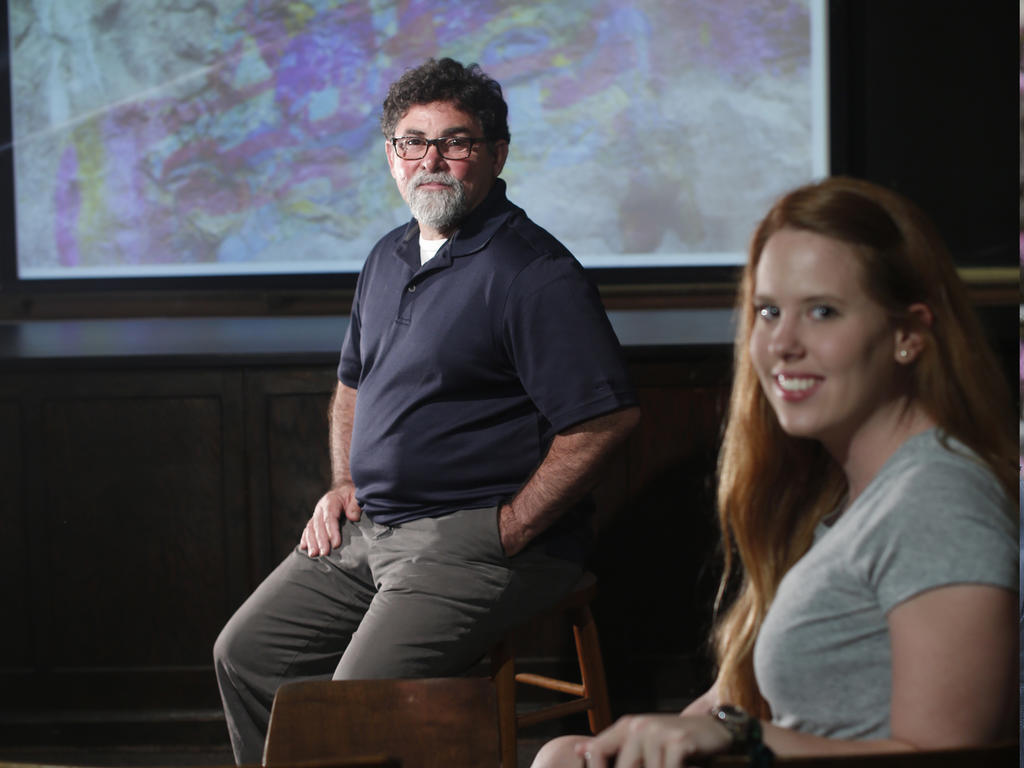By Richard J. Alley
Chemistry professor Dr. Jon Russ walks down a narrow corridor of Kennedy Hall and into a lab, where equipment that looks to the untrained eye like toaster ovens attached to SCUBA tanks sits in rows on metal tables. These are the tools of the trade for conducting archaeological research on artifacts from thousands of years in the past.
Among his many projects, Russ uses chemical analysis to establish dates for rock art found in places such as the Texas-Mexico border and the southern part of Mexico. His research samples—which he says are “priceless”—date as far back as 4,000 years ago and help us better understand the early inhabitants of these regions. Writing of his research, Russ notes, “Based on radiocarbon analysis and stylistic interpretations, the vast majority of the rock art was produced between 3,000 (to) 4,000 years ago. This coincides with a period of elevated human population, thus the production of the rock art might be connected to a distinct cultural phenomenon. In other words, the creation of the paintings might very well be a response to natural stresses that are uniquely human.”
Using chemistry to better understand the human condition reflects liberal arts research at its finest. Sharing Russ’ interest in the project is a group of students that included Madison Fuller ’14, whose love of both chemistry and archaeology made her a perfect fit for the project.
“I was kind of an oddball at Rhodes because I have had multiple interests in anthropology and archaeology since I took a seventh-grade history class that dealt with Egypt. And I love being in a lab. So it was a mixture of all that that led me to chemistry,” says Fuller.
Russ’ goals for his students serve to frame their research experience. “The number one thing is that we advance our knowledge,” Russ says. “We also always have a goal of presenting information at conferences and, preferably, of getting published. We want to disseminate the knowledge that we gain.”
It is Russ’ ability to disseminate his knowledge to students that plays a key part in the close relationships he develops with his research assistants.
“I got a vast amount of help and understanding of the instruments being used, which I further used in my internships,” says Fuller. “Dr. Russ was the first person to teach me how to use gas chromatography—the background history of it. And, in that respect, it has helped me in many ways.”
Fuller’s mastery of complex analytical instruments requires the application of scientific methodology. The combination of application and methodology enables students to understand science as a whole—another goal that Russ sets for his assistants and his classrooms. Additionally, he notes, his research is multidisciplinary, so students learn from fields such as archaeology or biology along with chemistry.
As a supervisor in the Rhodes Archaeology Field School, Fuller, in fact, has done more work on archaeology digs than Russ, bringing in a level of knowledge and understanding that saw the scholar-mentor relationship evolve into one of colleagues.
“When they get to the point that they are doing these sophisticated methods by themselves, that they can go from the basic wet chemistry and extraction up to this complicated analysis, then they no longer need your help,” says Russ.
The relationship was critical to Fuller’s understanding of her science and her appreciation of her time at Rhodes and in the department. “Our work together did get to be more discussion-based rather than him just teaching me, and I thought that was a great help for me and my future in grad school,” she says. “It felt like he was preparing me for that.”
Fuller is now on the path to a master’s degree and a career in crime scene forensics. She has had internships during her years at Rhodes with the Tennessee Bureau of Investigation and the Arkansas State Crime Lab and will be leaving in September for a master’s program in the field at the University of Strathclyde in Glasgow, Scotland.
